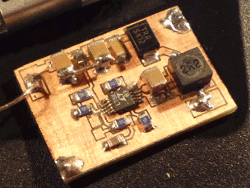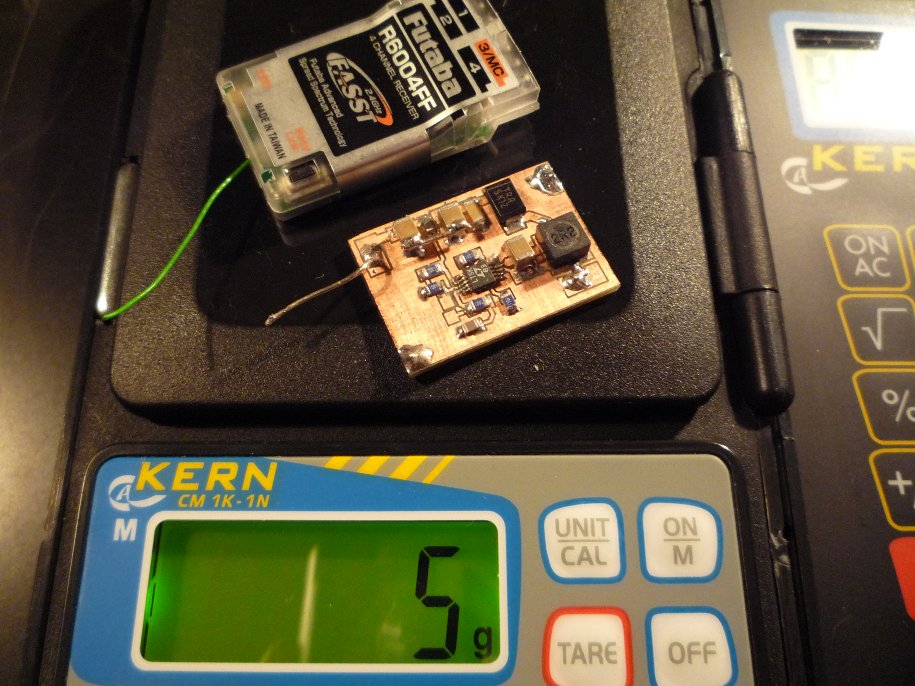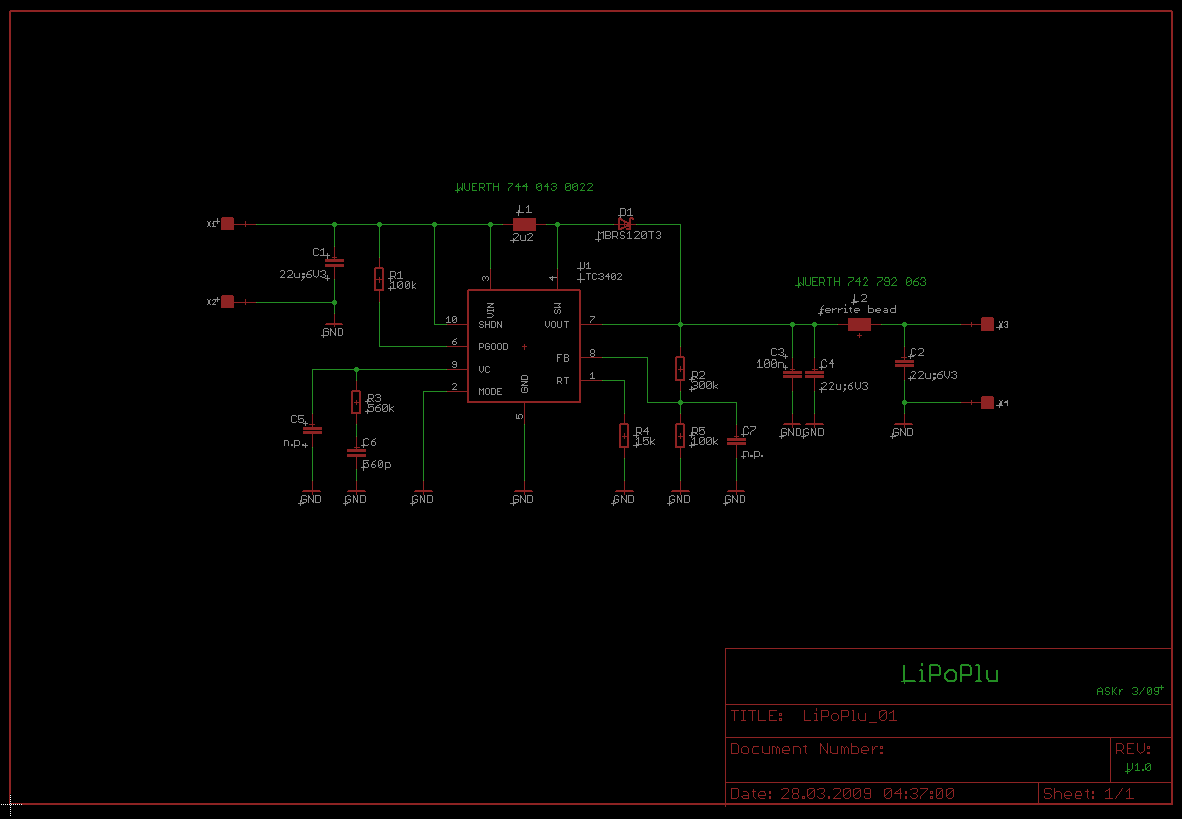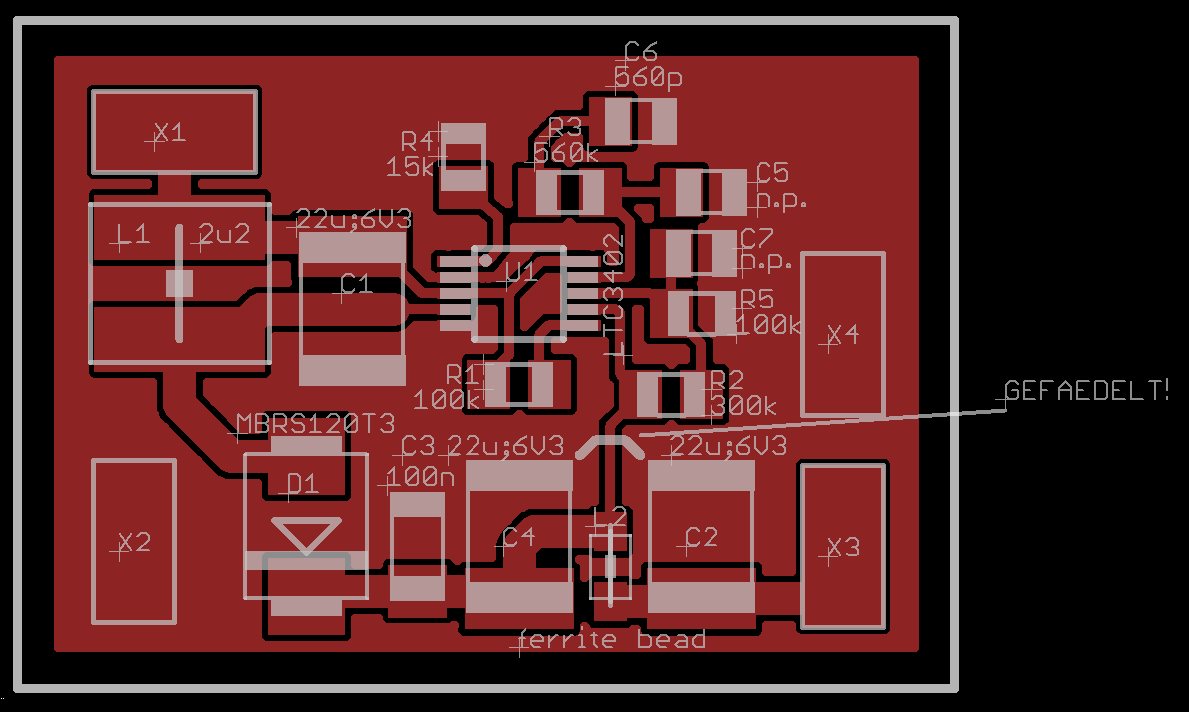LiPoPlu
A lithium polymere battery step up regulator.
A fully charged lithium polymer battery has
a voltage of 4.2V. It must not be discharged below 3.0V.
If you fly lightweight model planes like DLGs/SALs or shockflyer, every single gram counts.
The smallest available fun DLGs, like this, can have a flight weight down to 80g, including the complete RC equipment and battery.
Spring 2008 I exchanged my complete 35MHz equipment with 2.4GHz components.
Too bad if your brand new Futaba 2.4GHz receiver is specified down to only 4.0V...
It is still working down do ~3.3V but a single undershot (e.g. all servos full movement) generates a reset of
the receiver. Too dangerous...
Having 2 cells (~20g) in a plane which weights 99g (managed to keep this below 3 digits ;-) is not an option.
Therefore, this circuit was developed.
It will pump up the voltage from as low as 2.0V up to 4.5V. I did not choose a target voltage of 5.0V because the
servos otherwise would consume more current than needed for safe flying...
Capable of powering up to 4 x D47 servos (also sold as Robbe FS-31 or XXX SD-100) as well as the receiver.
The circuit is designed around a LTC3402, a 2A, 3MHz boost converter.
Although I bought a couple of those for outrageous 5 Euro(!) per piece, I don't regret it.
Less than ever if you consider the 200+ Euro per plane.
And well, I am not planning a mass production ;-)
NOTE: Be sure to apply the wire-wrap!
Solder a wire right across C4 and C2.
Fortunately they have a transmitter module which directly fits into my T10 (FF10, in Europe):
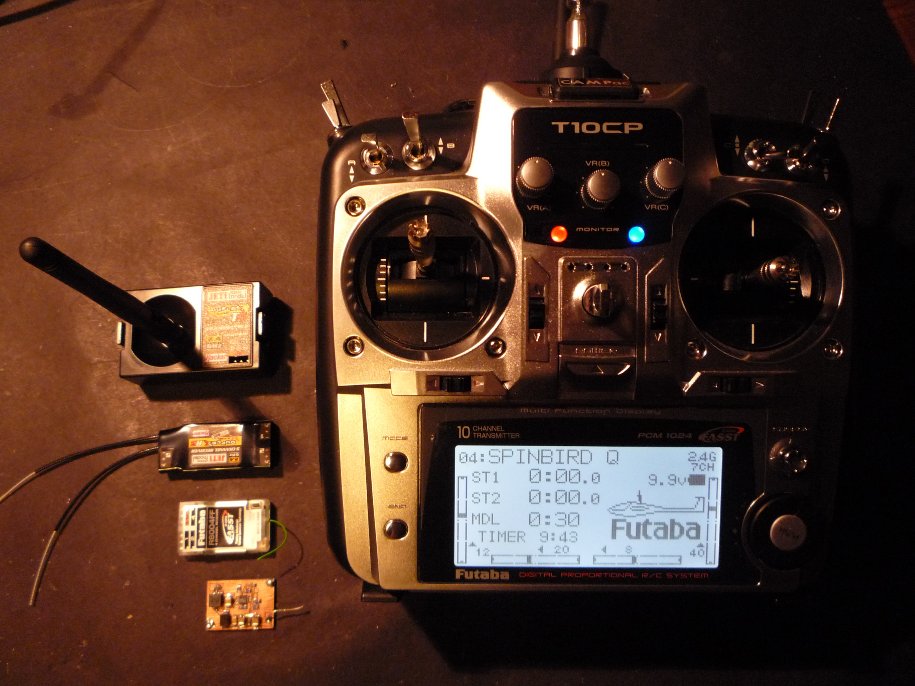
While the small Futaba R6004FF 4ch receiver has a range of only 300m (others of their line like R617 have
full diversity and full 2000m range but a weight of 9g) the new Jeti R5 5ch offers full range and diversity
at less than 5g and a smaller package.
Additionally it seems to operate fine down to ~3.0V but this needs further testing...
If it does, bad for Linear Technology and their 5 Euro regulator ;-)
AND:
As the name already implies: Yes, it IS duplex. You have a full bidirectional radio link!
The receiver itself will transfer signal strength and battery voltage but you can add more telemetry modules
like current sensors, vario (height), and, and, and...
Guess what project will follow soon? 8-)
They even were unsure about the size and weight of their receivers ;-)
Includes:
- schematic (PDF)
- placement (PDF)
- test layout, eagle (BRD)
DOWNLOAD: lipoplu.zip
ASkr 3/2009

